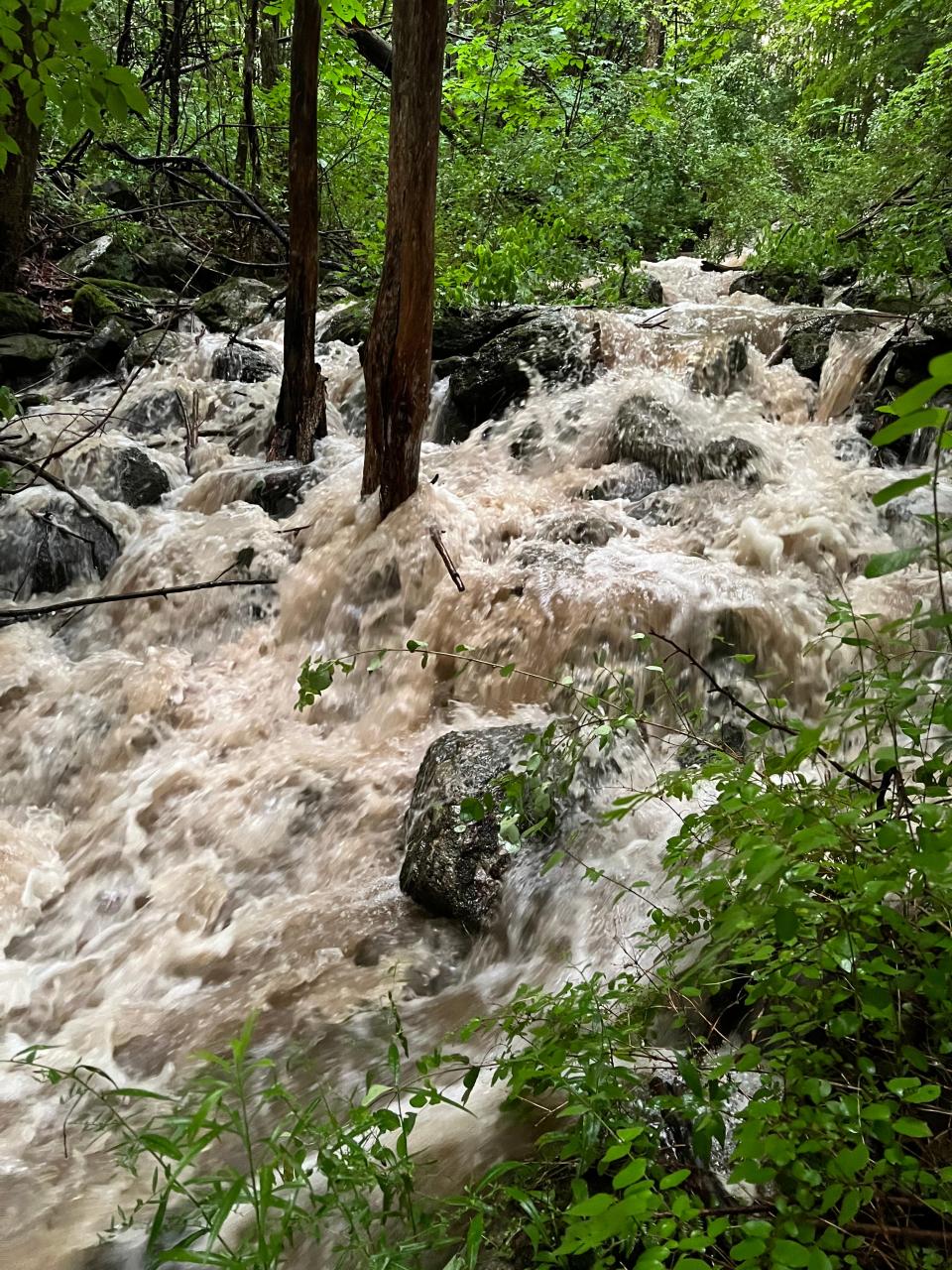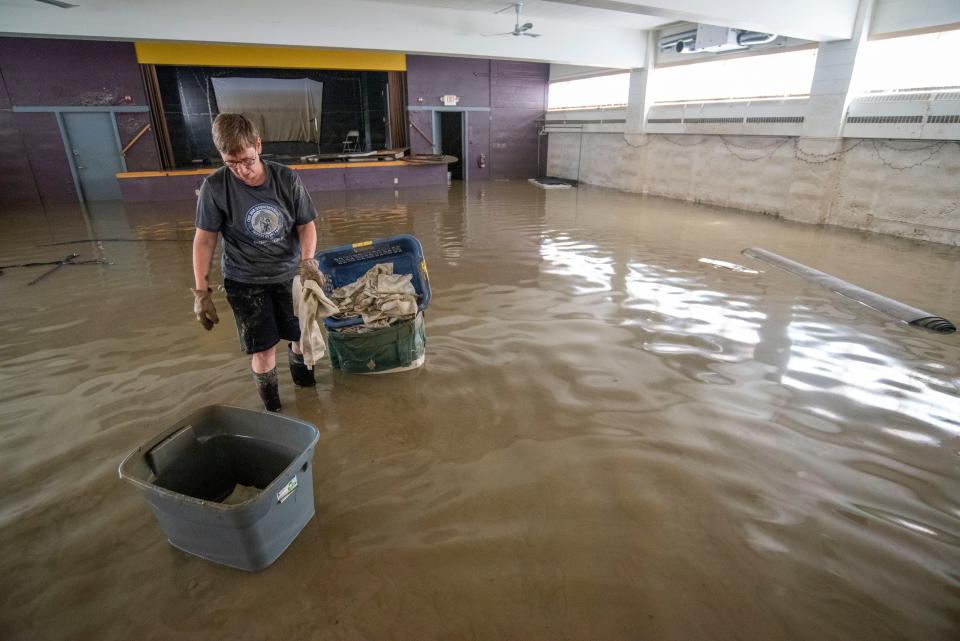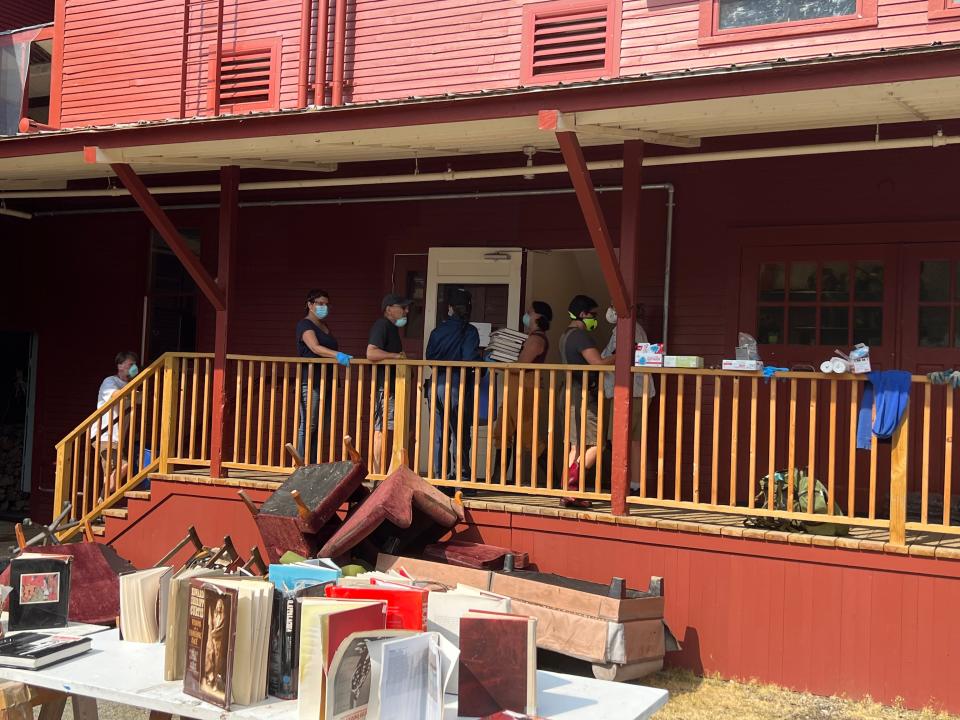After the flood: Why debris removal is necessary for mitigating future storm damage
After Vermont broke rainfall records in July, state officials say they are increasingly prioritizing flood-related debris removal as a preventative measure in the possible scenario of more stormy weather.
"Hurricane season is here and can impact us with more rain in the coming weeks," Gov. Phil Scott said during his Aug. 30 press conference, describing future flooding as one of the state's "biggest concerns."
Although no storms are currently headed toward Vermont, mitigation efforts like debris removal from public rights of way are vital to limiting damage from any future "extended rain event," Commissioner Jennifer Morrison said at the press conference.

While Vermont's Agency of Transportation and debris contractor have collected over 12 million pounds of debris since the June floods, many of the state's culverts, catch basins, bridges, highways and other key infrastructure that help temper flooding remain obstructed.
"That's why all of us from the state to municipalities need to make cleaning debris a priority to reduce flooding impacts over the next few months," Scott said.
Flooding from August rain
Officials' highest priority is clearing up demolition and other human-made debris, which are particularly dangerous.
Vermont is already experiencing the consequences of residual flood-related debris.
After a series of rain showers at the end of August, Ripton, Montpelier and Barre experienced mild flooding. The main reason, Scott said, was silt buildup in catch basins and other storm infrastructure.
"Getting that cleaned up is going to be critical as we move forward," he said.

But even vacuuming silt from storm infrastructure in every impacted Vermont community could take many months.
Scott encouraged cities and town to continue removing flood debris from public rights of way and keep track of costs when the time comes for federal reimbursement. Morrison added that the state will provide assistance if a cleanup project ever extends a municipality's resources.
"But we have to know about the issues in order to give you help," Morrison said.
To address these needs, municipality officials can reach out anytime to Vermont Emergency Management.
Despite not being as high of a priority, officials are also keeping an eye on "vegetative and woody debris in and around waterways," Morrison said, which will become a more pressing as spring thawing occurs next year.
What average Vermonters can do to help
Civilians can help by disposing of any minor debris they encounter and reporting any clogged or obstructed storm water systems, culverts, catch basins and bridge abutments to municipal officials.
"We can't stop the rain, but we can do everything possible to ensure it goes where it should go," Morrison said.
On Saturday, Aug. 26, over 500 Vermonters signed up to help clear away debris for Flood Recovery Clean Up Day. Hundreds more joined them. Together, participants disposed of over 100,000 pounds of trash and debris.

But as helpful as that day was, it barely made a dent in the problem.
"From what I saw from working on a couple of projects in Barre myself, and from what I hear from people around the state, is there is still a lot of work left to do," said Scott, who attended Flood Recovery Clean Up Day. "It's not over, and we'll need volunteers and efforts like this to get us through the next couple of months."
The next public clean-up event is Wheels for Warrant, where people can dispose of tires they accumulated due to the flood, free of charge. The event will take place 8 a.m. to 4 p.m. on Sept. 16 at the Granite Museum in Barre.
Megan Stewart is a government accountability reporter for the Burlington Free Press. Contact her at mstewartyounger@gannett.com.
This article originally appeared on Burlington Free Press: Debris removal from infrastructure key in Vermont flood mitigation

